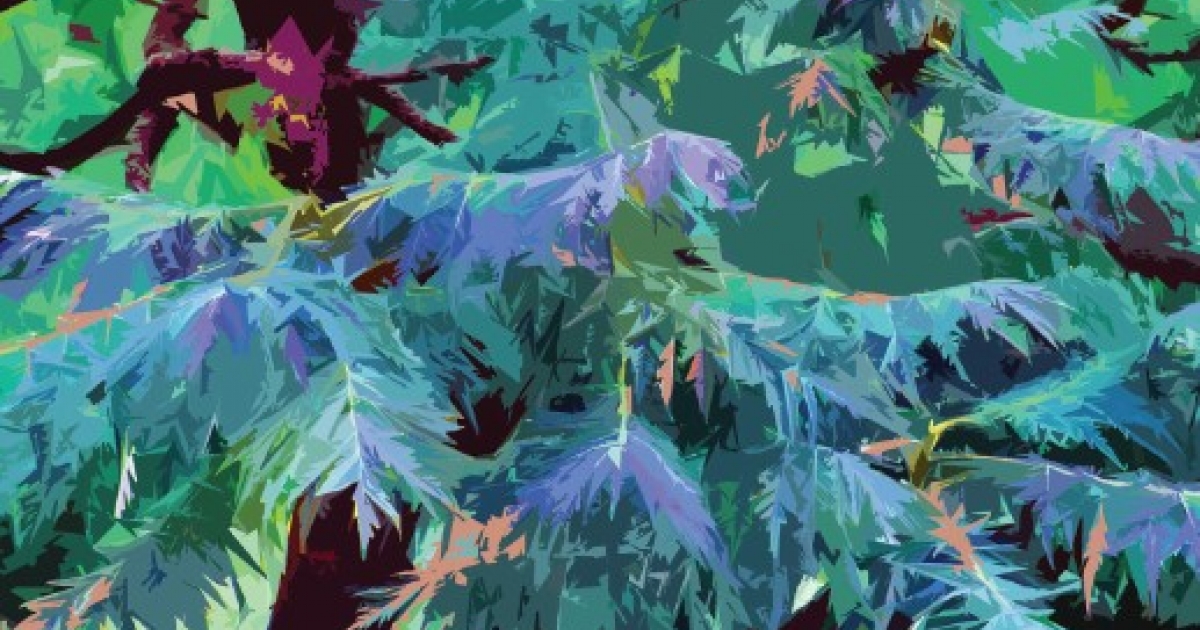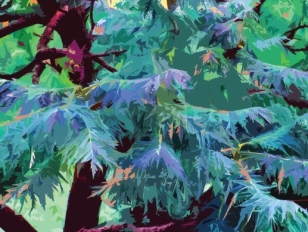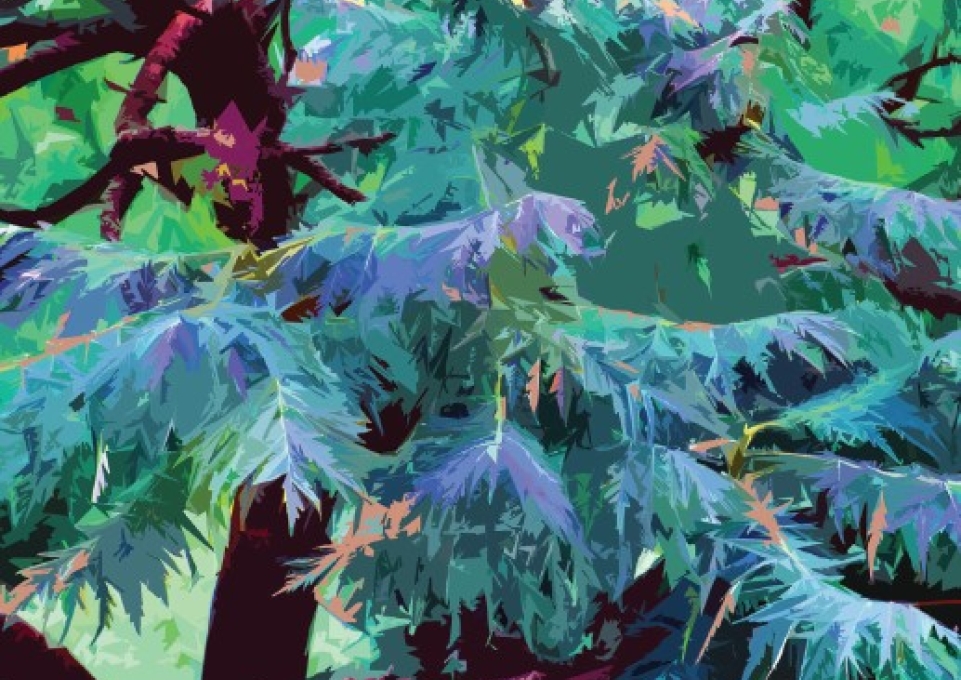
When Susan McCartney, director of the Small Business Development Center, came to Robert J. Warren, professor of biology, last year with an idea to create a guidebook on native trees in Western New York, Warren wanted it to be unique.
“There are a million guides, and they’re all boring,” Warren said, noting that he and McCartney are both members of the Maud Gordon Holmes Arboretum at Buffalo State College. “What would we add? So we came up with an idea to do something different.”
Through a collaboration with Carol Townsend and the Art and Design Department, Warren and McCartney enlisted student-artist Jaclyn Chuchanis, a senior graphic design major, to create an abstract, whimsical guidebook on the region’s native vegetation. The finished product, The Street Life of Trees: An Urban Guide is a beautifully illustrated, spirited look at the stunning variety of trees, shrubs, and bushes native to Buffalo and the surrounding area.
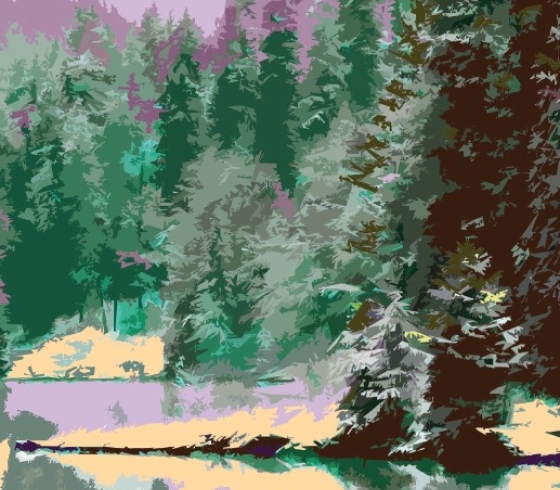
Pine (Pinus spp.)
It’s not meant to be used as a reference book, Warren said, but rather to inspire an emotional response to the “artistry and aesthetics of street trees.” The book is available online, and proceeds contribute to the arboretum’s mission.
“We had so much fun,” Warren said. “I wrote the descriptions, and wanted them to be irreverent. It’s more entertainment, but I think we sneak the educational stuff in there.”
Laced with bits of poetry and verse, the book is organized by sections: native trees, native shrubs, common trees, and threatened species, all found in and around the city of Buffalo. Caterpillar and acorn index keys indicate each species’ value to critical pollinators, such as moth and butterfly populations, or to foraging animals like squirrels and other wildlife. Colorful native songbirds also grace the pages.
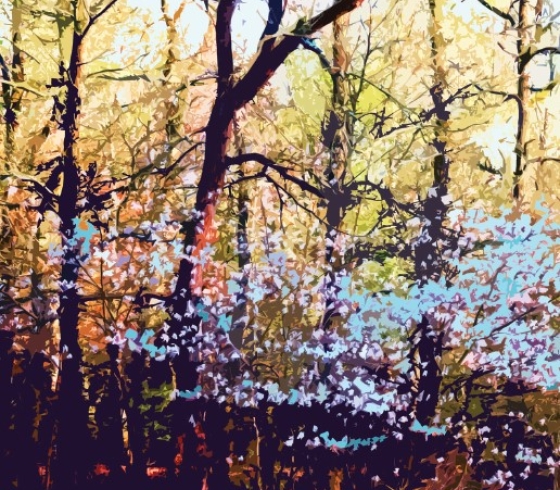
Shadbush/
Serviceberry
(Amelanchier spp.)
McCartney said the book is designed to make learning about trees an enjoyable experience, to “help folks to love trees, plant trees, protect trees, and appreciate and better understand the immense impact trees have on the earth’s ecosystem,” she said. “We are hoping this beautiful book will help people fall in love with trees. People protect what they love.”
The book was initially meant to be a pamphlet, Townsend said. She had been working with Chuchanis as a faculty mentor when the pamphlet blossomed into the book idea—as a fundraiser for the arboretum. Chuchanis was the natural choice to be the artist.
“I am very proud of Jackie’s accomplishment,” Townsend said. “This took a tremendous amount of day-in and day-out perseverance on her part, despite all this COVID business. I was happy to guide her along some of the aesthetic and technical issues.”
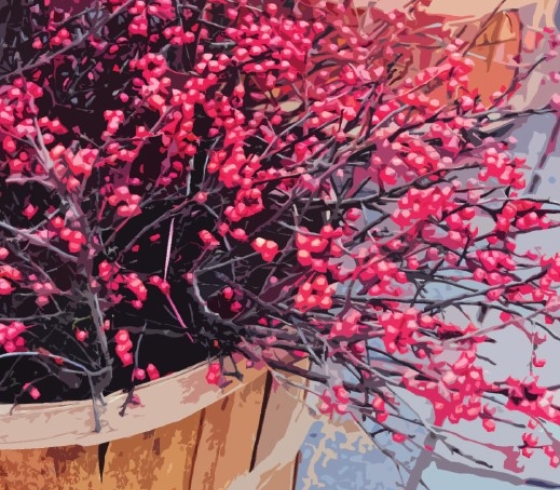
Winterberry (Ilex verticillata)
Cecilia Pershyn, coordinator of the Blue Economy Education Program at Riverside Academy; graduate student Chloe Mokadam, tree adviser for the book; and several others contributed as well, Townsend said.
Several of Chuchanis’s illustrations were also chosen for a series of popular promotional notecards produced by the arboretum last year. She won an award for her contribution, and was thrilled to be asked to work on the book. She had never met Warren before.
“The first time I met him, he seemed to be very knowledgeable and nice,” she said. “Over time though, having meetings with him every other week, I got to know him more. He seriously is a charismatic and genuine person. It was a wonderful time working with him.”
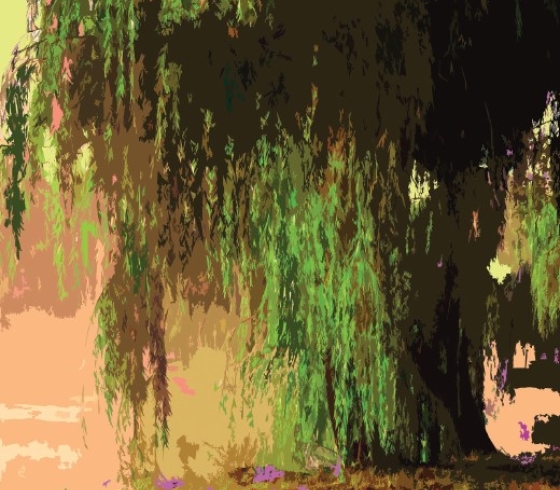
Willow (Salix spp.)
Ironically, Townsend and Chuchanis, the artist, initially tried to get everything scientifically correct, while Warren, the biologist, wanted the art to be more abstract, and less technically correct. It was a complete role reversal, Warren said.
“It was actually really funny,” he said. “When we first started meeting, they wanted to be true to the science. I was the one arguing, ‘No, no, no. Abstract. Art. I don’t want to see anything real.’”
Chuchanis said she enjoyed working on the project, and appreciated Warren’s candor.
“Making art and having him get so excited over it made this project a great experience,” she said. “And he doesn’t lie, either. If he doesn’t like something, he won’t beat around the bush, and I honestly really enjoyed that. This meant that what he did love, he was being honest about, and what he didn’t enjoy, he made a point to fix.”
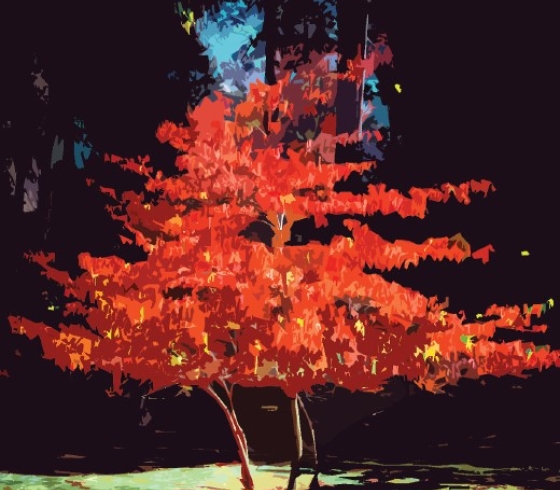
Dogwood (Cornus spp.)
The process for creating the art for the book was “slow and tedious,” Chuchanis said. It took her a month to settle on an approach for the artwork, and then the process became easier.
“There were a lot of redos and images that had to be thrown away,” she said.
Using either stock images or her own photographs, she adjusted the color, contrast, and exposure of each, while also using filters to create “cut-like shapes.”
“I like the whole idea of abstracting an image to the point that you can still see what it is, but it’s just blocks of color,” she said. “I would then paint in more color and that process would bring me to my final product. Lots of revisions and do-overs, but eventually I found myself with 64 illustrations that work well together.”
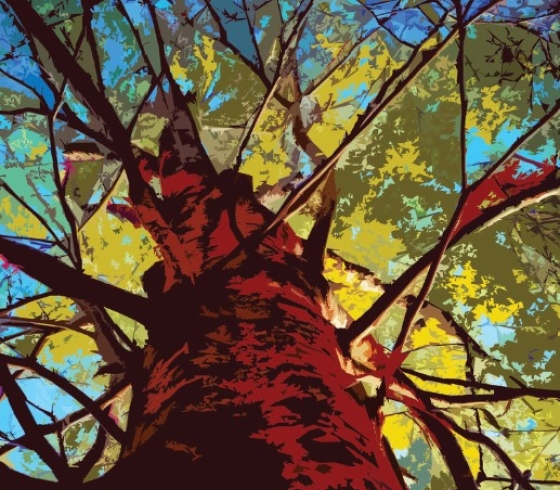
Maple (Acer spp.)
Warren said he had great “synergy” with Chuchanis and Townsend, and called it a great example of interdisciplinary collaboration. He hopes the book, which he called “gorgeous,” points people to the idea that planting just any tree is not good for the local environment, and can actually be detrimental if it’s not native to the area.
“Folks don’t realize that,” he said. “It creates a dead zone where something useful could be, and I think that message comes through in the book, in a fun way.”
Chuchanis is now an undergraduate student with a book under her belt. It’s an experience she won’t soon forget.
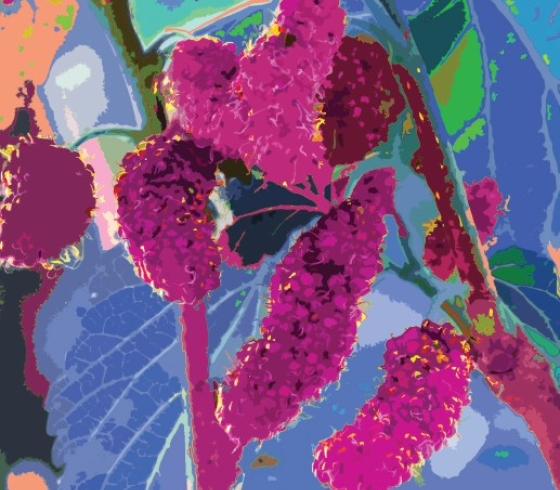
Red mulberry (Morus rubra)
“I was able to work on a project with highly experienced people and create something we are all happy about,” she said. “I learned real-world experience on how to work with a group, as well as handle criticism. I really feel like this book has helped me evolve into a better artist, and I was also able to get a graphic design job at a local small business because of the connections I made within this project.”
She also has some advice for fellow students: don’t turn down opportunities.
“At the start of this project, I was in about 21 credits’ worth of classes, so my taking on this project was wild, to say the least,” she said. “However, my gut just told me to say yes, and I’m so very happy that I did that. I hope this book inspires people to get interested in the environment and work toward bettering our environment.”
Pictured top: Staghorn Sumac (Rhus typhina)
Illustrations by Jaclyn Chuchanis
